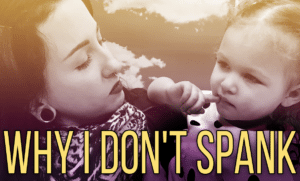Kat Von D & Other Celebrity Anti-Vaxxers
Over the last 15 or so years, we’ve seen a rise in parents refusing vaccinations for their children, regardless of the risk of spreading communicable illnesses. Some of the concerns revolve around misinformation about the MMR vaccine and autism as well as the vaccination schedule. Today we’ll be delving into what vaccines do and do not do, what is in vaccines and why the ingredients are safe, and why we need vaccines for “common” illnesses in the first place.
Vaccines DO NOT cause autism. This has been proven time and time again. In fact, the big thing that anti-vaxxers say over and over again is that “big pharma” just wants our money, but the men who made the original argument against vaccinations and posited that they cause autism were, literally, making money off of gullible and scared parents by selling snake oil cures and books.
Not only was that original study thoroughly debunked by many different scientists with no ties to the vaccine industry (that phrase makes me laugh, btw), but EVEN IF IT WAS TRUE, what you’re saying is you’d rather take the risk of your child dying or suffering long term illnesses to avoid having a child with autism. That, my friend, is cruel beyond measure. I work with people on the autism spectrum every week. They are some of the most empathic, creative, and wonderful people and I can’t imagine a world where people like that don’t exist. Sure, it’s hard being neuro-atypical in a world that is uneducated about autism, and obviously people who are low-functioning will need more help in their lives and certainly their families will struggle to find balance, but they still deserve to live in a world where they are accepted and loved.
There has always been autism. It seems to a lot of people that autism has only recently become a problem, but the truth is it’s only recently been diagnosable on a spectrum. The science of psychology, genetics, and neurology is in its infancy. We are learning more and more every day. We don’t just shove people in mental institutions and forget about them anymore, which is a great thing, but that means we see more of the illnesses that we closed away 100 years ago. We are bound to notice this more now that we have the knowledge, but that doesn’t make it a new issue. Parents typically notice the signs of autism around 12-18 months of age, near the time when the MMR vaccine should be administered, but the signs start much earlier and it has even been proven that regular MRIs can predict autism in high-risk children allowing parents to begin treatment earlier for a higher success rate. Scientists haven’t exactly nailed down the cause of autism, but there are some defined commonalities that seem likely, including exposure to toxins and viruses en utero, genetic components, and even an increased number of synapses creating miscommunication in the neurons of the brain. Just in case you weren’t paying attention, that means you aren’t making your babies autistic by not reading to them early enough, by not forcing them to eat their veggies, and certainly not by giving them vaccinations.
Vegetarians/vegans looking to do less harm should consider that a lot of the illnesses covered by vaccines can affect people and some animals, too. You have to consider the general health of our population and the effects of your stance on not just our species but also some animal species (research reverse zoonotic disease), when you put your community in danger of catching preventable diseases (especially those who are already immunocompromised and might die from these illnesses) you are not choosing the most compassionate option. I appreciate the desire to not spend your money on a product that involves the cruelty of animals, but when your choice then becomes cruel to your entire community and your platform encourages others who might be uneducated about these matters to make that choice, too, you are engaging in cruelty whether you believe it or not.
A lot of anti-vaxxers say, “well, if you have herd-immunity, then why do you care if we don’t vaccinate?” Herd immunity only works when the majority of the herd is immunized against disease. When large groups of people in communities choose not to vaccinate, it’s not the vaccinated that suffer, it’s those that CANNOT be vaccinated. Young infants, adults and children with weak immune systems, people with certain diseases, and the elderly are all at risk for the communicable diseases you laugh at. These people, when they catch these diseases, most certainly suffer, but they are also at risk for unnecessary complications and death. Our communities rely on everyone who can get vaccinated to be vaccinated so that people with medical exemptions can stay safe. Do you really want to be the reason a baby gets sick and suffers for a month in a hospital or, god forbid, dies? Do you really want to be the reason a person who has been living with multiple sclerosis and managing their symptoms suddenly gets chicken pox which leads to pneumonia and then death? Because, yes, even common childhood illnesses can be deadly.
I, personally, got chicken pox before the vaccine was available and ended up in the hospital with severe pneumonia when I was 3 years old. It happens. Furthermore, I let my vaccines lapse when I didn’t have healthcare in my early 20s and contracted Mumps. I was dangerously ill for about a week with a high fever, I was sick for a month, and I lost a decent amount of the hearing in my right ear. I consider myself lucky because during the worst of my illness, I could just barely hear out of both ears in addition to not being able to eat normally due to extreme throat pain. If you don’t have to go through this, why would you want to risk it?
I’d like to talk about the individual diseases covered by the MMR vaccine, which seems to derive the most confusion for the anti-vaxx movement and their morbidity and mortality rates.
Measles
Measles remains the leading cause of vaccine-preventable infant mortality worldwide.
U.S. Measles Burden: Before 1963 Vaccine Development* Each year, measles caused an estimated 3 to 4 million cases Close to 500,000 cases were reported annually to CDC, resulting in: 48,000 hospitalizations 4,000 cases with encephalitis (brain swelling) 450 to 500 deaths
Rate of complications in the US
Hospitalization 1 out of 4 cases Encephalitis (inflammation of the brain) 1 per 1,000 cases Death 1-2 per 1,000 cases
Complications are more common in children <5 years and adults >20 years old.
Common Complications • Common measles complications include ear infections and diarrhea. • Ear infections occur in about one out of every 10 children with measles and can result in permanent hearing loss. • Diarrhea is reported in less than one out of 10 people with measles. Severe Complications • Some people may suffer from severe complications, such as pneumonia (infection of the lungs) and encephalitis (swelling of the brain). They may need to be hospitalized and could die. • As many as one out of every 20 children with measles gets pneumonia, the most common cause of death from measles in young children. • About one child out of every 1,000 who get measles will develop encephalitis (swelling of the brain) that can lead to convulsions and can leave the child deaf or with intellectual disability. • For every 1,000 children who get measles, one or two will die from it.
Rubella
Rubella is an acute, contagious viral infection. While rubella virus infection usually causes a mild fever and rash illness in children and adults, but infection during pregnancy, especially during the first trimester, can result in miscarriage, fetal death, stillbirth, or infants with congenital malformations, known as congenital rubella syndrome (CRS).
Children with CRS can suffer hearing impairments, eye and heart defects and other lifelong disabilities, including autism, diabetes mellitus and thyroid dysfunction – many of which require costly therapy, surgeries and other expensive care.
The highest risk of CRS is in countries where women of childbearing age do not have immunity to the disease (either through vaccination or from having had rubella). Before the introduction of the vaccine, up to 4 babies in every 1000 live births were born with CRS.
The World Health Organization, or WHO, estimated that Rubella would be eradicated by 2020, let’s hope the anti-vaxx movement doesn’t push that date back.
Mumps
From the website “The History of Vaccines”: Mumps can be a mild disease, but it is often quite uncomfortable and complications are not rare. These include meningitis; testicular inflammation in males who have reached puberty, among whom about half experience some degree of testicular atrophy; inflammation of the ovaries or breasts in females who have reached puberty; and permanent deafness in one or both ears. Before the development of a mumps vaccine, the disease was one of the major causes of deafness in children.
Some research also suggests an increase in miscarriages among pregnant women who are infected with mumps during their first trimester.
A lot of parents are concerned about the dangerous chemicals in vaccines, and I totally get it. It sounds terrifying when you list them out without really considering the details. Really, it’s just scary as hell to watch your child get poked with needles full of stuff you don’t understand. Let’s talk about some of the compounds that sound scary, but really are not harmful in this context.
- Thimerosal – because of the uproar over this common chemical, no vaccines except influenza and tetanus contain thimerosal, and even that has an option to be thimerosal-free. Mercury is found in many different seafoods, some trace and some larger amounts, but Thimerosal (ethyl mercury) is metabolized faster than the mercury in your seafood, therefor it is safer. Thimerosal is a preservative that is safe in small amounts.
- Formaldehyde – Formaldehyde is another preservative to aid in the stability and cost effectiveness of the product. Furthermore, the stabilizing agents and preservatives help in dispersing vaccines to countries that desperately need a cheap or free method of vaccinations. Formaldehyde is already present in the human body to aid the metabolic system. Yes, it can be toxic in larger quantities, but the majority of the small amount of formaldehyde used in vaccinations is processed out of the end product. The highest amount of formaldehyde present in any vaccine is .02 mg per dose. An average two-month-old baby would have around 1.1 mg of formaldehyde circulating in their body, with higher naturally-occurring amounts for older children.
- Aluminum – Aluminum boosts your immune response to the vaccine so that you need less of it to get a strong response. It is the third most common naturally-occurring element and is present in many foods, breast milk, and even the water we drink. While aluminum can be dangerous in large amounts, a breast-fed infant will consume around 7 mg of aluminum in the first six months of life and the amount of aluminum in a single vaccine doesn’t even noticeably raise the aluminum content in the bloodstream.
- Antibiotics – I’m totally not all about antibiotics being used for anything and everything, but the small amount of antibiotics in vaccinations help with the risk of bacterial infection. While some children are allergic to antibiotics, no allergic reaction to a vaccine has ever been traced back to the antibiotic. At the end of the purification process, almost all the antibiotics are removed from the vaccine, leaving only trace amounts or no discernible antibiotics left.
- Gelatin – Gelatin is a stabilizer and the single largest identifiable source of allergic reactions due to vaccines, but still only one in two million injections is at risk for anaphylaxis due to vaccination and that is why you have to stick around for 30 minutes after your child has their first vaccinations. You can absolutely receive exemptions or alternatives based on this allergy.
- Monosodium Glutamate or MSG – MSG is used as a preservative to keep vaccines stable throughout their shelf-life. MSG has gotten a bad rap due to anecdotal evidence that it causes headaches, dizziness, flushing and sweating (and, in my opinion, due to racism against Asian Americans) but none of that is supported by scientific research on the subject. Some people (including myself) have mild allergic reactions to MSG such as temporary swelling, but it has not been found to be harmful and is still commonly used in foods. Because of the outrage over MSG, a lot of companies chose to stop including it regardless of whether or not it was scientifically justified. It is only present in two vaccines, the influenza and the adenovirus vaccines.
I’d also like to discuss the vaccine schedule a bit, while we’re talking about misconceptions and false narratives.
There is absolutely no evidence of vaccinations disrupting the immune system of the children that receive them.
With the current schedule, children may receive up to 24 immunizations by age 2 years and up to 5 injections in a single visit. Although the number of vaccines has increased over the years to protect against a greater number of diseases, because of technological advances children now receive fewer antigens, which are the components of vaccines that stimulate the immune system. The Childhood Immunization Schedule and Safety: Stakeholder Concerns, Scientific Evidence, and Future Studies –https://www.ncbi.nlm.nih.gov/books/NBK206938/
Every country has a slightly different vaccination schedule because of certain illnesses being more prevalent in different areas of the world, and only two countries require the tuberculosis vaccine. This isn’t a sign of a lack of evidence-based vaccination scheduling, but a sign that different countries have different priorities on what they should vaccinate against first. There is a commonality among most countries on when the MMR vaccine is given, interestingly enough.
Now, I’d like to talk about the responsibility of celebrities in pushing the anti-vaxx narrative.
Whether we like it or not, whether it’s rational or not, people look up to, idolize, and follow their favorite celebrities as though they have access to more information and more knowledge of conspiracies than experts in the field. I’m not here to say all celebrities are fear-mongering or acting out of a desire to dupe people, because I’m not that cynical. I do think people tend to talk about what they believe and, unfortunately, celebrities have a platform that trumps the average doctor or researcher.
I would love to give celebrities a pass on the responsibility of being role models, but the truth is we just aren’t at a place in our society where people are taught to think critically, spend time researching, and suss out what is solid and peer reviewed information and what is conspiracy theory nonsense. Celebrities have shifted the perception of vaccinations whether they like it or not, and people follow suit or feel emboldened to make dangerous and uninformed decisions based on there being publicity for false narratives. It started with Jenny McCarthy and her ever shifting story about how her son had autism and was cured of autism and she thinks it had to do with the MMR vaccine. She has since changed her position on vaccines, but the damage is done. Now we have our newest anti-vaxxer celebrity face Kat Von D, who publicly announced she wouldn’t be vaccinating her son (assumedly on the grounds of gelatin, an animal byproduct, being in vaccines).
In theory, parents should be able to choose how they raise their children. I totally get that most of us are operating on a limited amount of knowledge on most things, that’s just part of being human, and, because of this ignorance, we can be fearful of things we can’t immediately understand. When you see your baby getting multiple shots and you really don’t have much of an idea of what is inside them and how they work, that will scare any rational parent. Where we go sideways in this is not that we aren’t allowing parents to make choices for their own family, but that this choice in particular is dangerous for OTHER people’s families. It’s not just about that one little family unit anymore, it’s about all of us acting in the best interest of the community.
When celebrities use their platform to spread misinformation, it’s naive to believe that people will do their research and figure out if that actor, musician, or artist is educated on the topic or not. Celebrities are looked up to and they have so many resources at their disposal that a lot of folks will assume they know what they are talking about. People follow, pure and simple, and there’s nothing wrong with that from a biological point of view. You fall in line or you get ousted from the security of your community, it’s a totally natural behavior. This natural impulse to follow someone we look up to makes that celebrity platform all the more dangerous and all the more effective at spreading misinformation. Another point I’d like to make is that a phD does not make someone an automatic vaccination expert. Everyone has a gap in their understanding of things, even educated people.
I’d like to leave you with a quote that I think fits this video really well. Since we have had vaccinations, there have been groups of people who misunderstood and rallied against them. The anti-vaxx movement isn’t new, but in this day and age where we have access to so much information, it seems ridiculous that we’re still going through this.
“In 1736 I lost one of my sons, a fine boy of four years old, by the small-pox, taken in the common way. I long regretted bitterly, and still regret that I had not given it to him by inoculation. This I mention for the sake of parents who omit that operation, on the supposition that they should never forgive themselves if a child died under it; my example showing that the regret may be the same either way, and that, therefore, the safer should be chosen.” — Benjamin Franklin
At that time, smallpox inoculation involved lancing open the skin of a healthy person and placing a scab or pus from an infected person which gave the healthy person a more manageable form of the illness. You can understand why people were a bit put off by it, and it just goes to show you how far we’ve come with our vaccines.
Resources (I chose some that had info from multiple sources, but tried to stick peer reviewed studies or articles that referenced peer-reviewed studies):
20 years ago, research fraud catalyzed the anti-vaccination movement. Let’s not repeat history.
The MMR vaccine and autism: Sensation, refutation, retraction, and fraud
Anti-vaxxer parents? They’re just trying to fit in, UWA study says
Are the recommended childhood vaccine schedules evidence-based?
Study provides more evidence for safety of immunization schedule
Graphic proof that vaccines work (with sources) – Isabella B. – Medium






